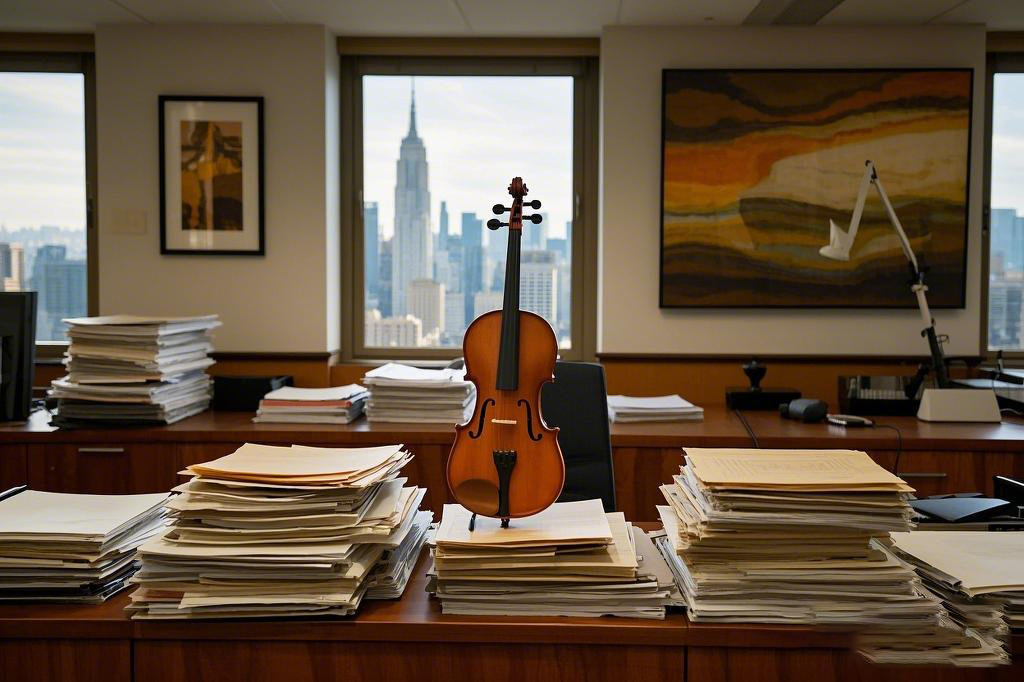Building Musical Identity_ Chinese Heritage Through Violin Repertoire
Shang Kun 2025-04-08 146
Building Musical Identity: Embracing Chinese Heritage Through Violin RepertoireIn the ever-changing world of music, many artists seek to create a unique identity that reflects not only their personal experiences but also their cultural heritage. For Chinese violinists, building a distinct musical identity becomes an exploration of their roots, intertwining the rich sounds of classical violin with the evocative, centuries-old traditions of Chinese music. But how can these artists preserve their cultural authenticity while reaching global audiences? Is it possible to blend the depth of Chinese heritage with the universal appeal of the violin? The answer lies in carefully curated repertoires that honor both worlds.
One of the most interesting challenges faced by Chinese violinists today is the perceived disconnect between Western classical music and traditional Chinese music. The violin, a Western instrument, doesn’t inherently carry the tonal nuances and expressiveness found in Chinese string instruments like the erhu. So, how do musicians navigate this divide? The real question lies in how one can embrace both the violin’s unique voice and the emotional depth of Chinese music. The solution: a curated repertoire that integrates Chinese melodies, folk tunes, and modern compositions, reshaping the violin to echo the soul of Chinese culture.

But it's not just about playing Chinese compositions on a violin. The true challenge for many musicians is to weave a narrative that speaks to both the violin’s Western origins and the powerful cultural tapestry of China. Traditional Chinese instruments like the pipa or guzheng offer a distinctly different sound world compared to the violin’s resonant strings. Yet, with the right repertoire and thoughtful arrangements, the violin can be adapted to play melodies that are deep-rooted in Chinese traditions, while also maintaining the instrument’s own voice. This fusion of East and West leads to a unique musical identity that speaks both to local heritage and global audiences.
For Chinese violinists aiming to carve out their own musical identity, the key lies in focusing on pieces that highlight the unique fusion of cultural sounds. Rather than simply playing Western compositions with a touch of Chinese flair, musicians can explore original works that infuse Chinese musical elements—such as pentatonic scales, distinctive rhythms, and folk-inspired melodies—into classical structures. In addition, incorporating traditional Chinese instrumentation alongside the violin in performances can help bridge the gap between the two musical worlds, creating a harmonious blend of sounds.
Still, the journey of embracing cultural identity through violin music goes beyond simply playing the right notes. It’s about understanding the underlying philosophy of both music traditions. Western classical music values harmony, structure, and formality, while traditional Chinese music often focuses on expression, emotion, and subtle tonal variations. Combining these elements requires a deep knowledge of both styles, and this knowledge is crucial in making sure the music resonates with authenticity and heart.
For those interested in mastering this cultural fusion, seeking out expert guidance is crucial. Teachers who specialize in both Western classical music and Chinese musical traditions can offer invaluable insights into navigating this intricate process. One such teacher, Shang Kun, offers personalized one-on-one violin lessons that blend classical techniques with a deep understanding of Chinese musical heritage. His expertise, whether delivered offline or online, can help violinists achieve that elusive balance, fostering an understanding of both worlds and helping students build a musical identity rooted in Chinese heritage.
In the end, the true power of building a musical identity lies in its ability to express the heart and soul of a culture. For Chinese violinists, embracing their heritage through carefully chosen repertoire is not just a way of preserving tradition, but a means of creating a new language that speaks universally. The violin can transcend its origins, becoming a vehicle for telling a uniquely Chinese story, one string at a time.
